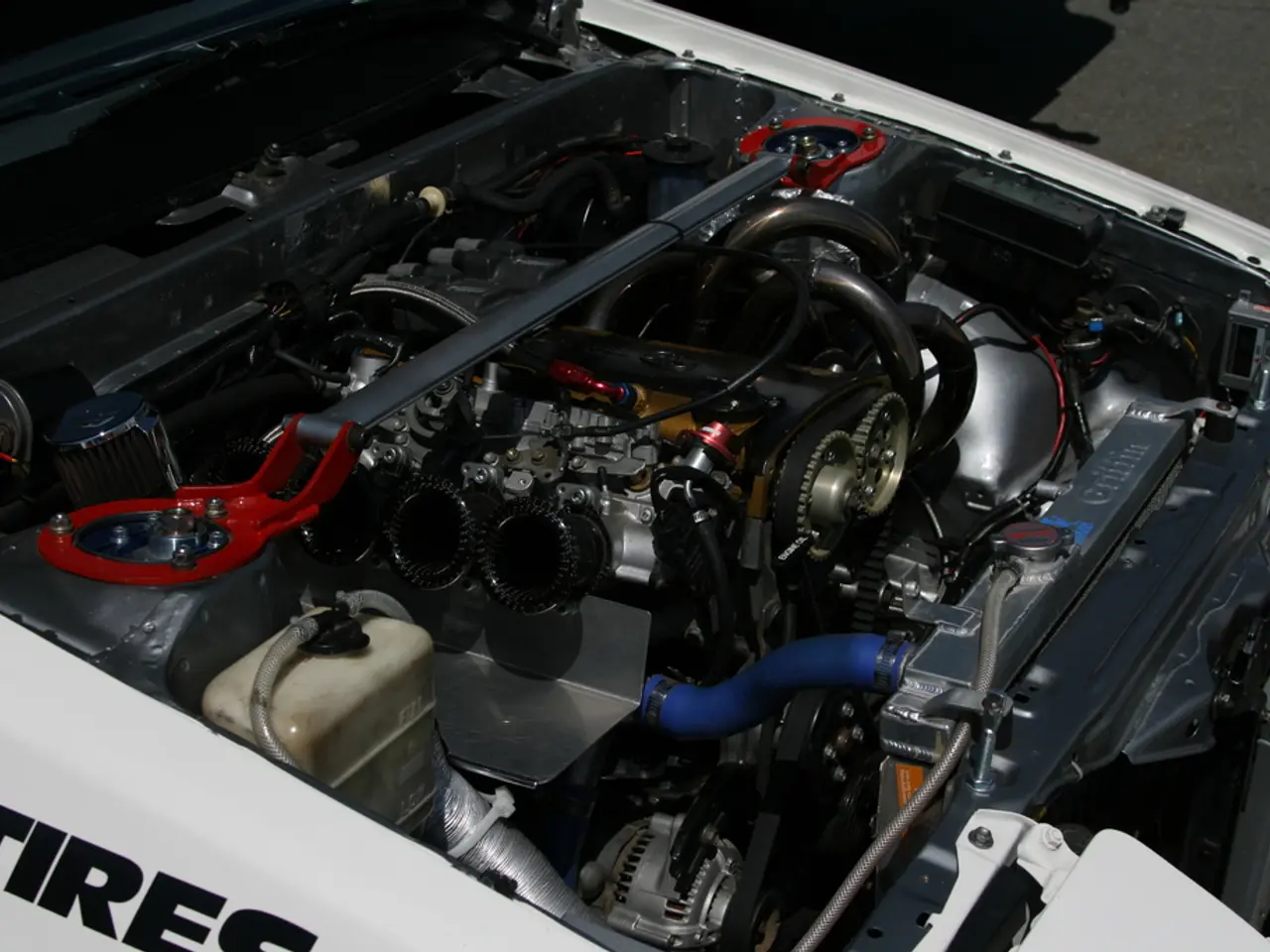Google Supports Energy Dome's Groundbreaking CO2 Battery Innovation for Sustainable Energy Storage
Google Partners with Energy Dome to Test CO2 Battery for Long-Duration Energy Storage
Google has partnered with Energy Dome, an Italian startup, to test and deploy a CO2-based battery for long-duration energy storage. This innovative technology could be a significant step forward in achieving Google's goal of 24/7 carbon-free energy.
The CO2 battery is a promising, cost-effective, and scalable long-duration storage system. It stores energy by compressing CO2 into a liquid and releases it by expanding it back to gas to generate power, supporting the transition to renewable energy grids with low carbon emissions.
Energy Dome's design allows users to store energy for 10 to 24 hours, much longer than regular lithium-ion batteries. The system uses mature industrial components like steel tanks and compressors, making it quicker and cheaper to build than other long-duration storage technologies. It offers a round-trip efficiency around 75%, competitive with lithium-ion but for much longer storage times.
The partnership reflects a broader shift toward deeper integration of renewable energy, long-duration storage, and corporate climate responsibility. Google is one of the world's largest corporate buyers of renewable energy and requires more than just solar and wind power for its 24/7 carbon-free goal.
The Sardinia project, where the first utility-scale CO2 battery installation will be built, will be one of the first commercial deployments of a CO2 battery anywhere in the world. Once operational, Google and Energy Dome will study performance data, costs, and scalability. If successful, the technology could be used across other Google data centers globally.
Energy Dome is currently building its first utility-scale project with the goal of making the technology bankable and ready for global markets. The company plans to expand into the U.S., where tax incentives could make new projects more attractive.
Other energy companies and utilities are watching closely, as many are also seeking cost-effective long-duration storage options. If the CO2 battery proves successful, it could support Google's plans to run all its data centers and campuses on 24/7 carbon-free energy by 2030, and potentially revolutionise the energy storage industry.
- Investment in climate tech such as renewables and clean energy solutions is crucial for a sustainable and carbon-free future.
- The healthcare sector is also embracing green energy, with workplace-wellness initiatives promoting energy-efficient buildings and home-and-garden practices for employee health and wellness.
- Fitness-and-exercise routines can contribute to reducing carbon footprints by incorporating eco-friendly activities like cycling or running instead of using cars.
- As people become more conscious of their environmental impact, they are looking to make sustainable choices in food-and-drink, opting for locally sourced, organic produce and minimizing waste.
- Environmental-science research is advancing treatments and therapies in the health-and-wellness industry, such as plant-based medicare and CBD products for wellness and pain management.
- The finance industry is increasingly focusing on incorporating environmental, social, and governance (ESG) factors into their investment strategies, providing more opportunities for sustainable living.
- Artificial intelligence (AI) and technology are playing a significant role in climate-change mitigation, from weather-forecasting and environmental monitoring to enhancing energy efficiency andpushing the boundaries of renewable-energy harnessing.
- Data-and-cloud-computing services are essential for businesses of all sizes, with many offering eco-friendly solutions and reducing energy consumption through cooling technologies and energy-efficient servers.
- The real-estate industry recognizes the need for sustainable practices, with buildings designed for energy efficiency and green spaces for outdoor fitness-and-exercise or relaxation.
- Sustainable-living isn't limited to the home or workplace; it extends to fashion and lifestyle choices, including buying from eco-conscious brands, supporting local businesses, and adopting a minimalist approach.
- Racing enthusiasts can contribute to a cleaner and greener industry by supporting electric or hydrogen-powered racing series like Formula E or Hydrogen One, as they transition away from fossil fuels and toward renewable energy sources.
- Cybersecurity is vital in protecting sensitive data and maintaining privacy in our increasingly digital world, where innovations in AI and technology keep evolving to combat cyber threats.
- Advances in clean energy and renewables can also influence other sectors, like food-and-drink production, which can adopt renewable-energy sources for cooking and processing, reducing reliance on fossil fuels.
- Governments can encourage businesses to adopt sustainable practices through measures like providing tax incentives for clean energy investments, improving their finance and economic impact.
- Sports teams and leagues are embracing environmental-science principles, investing in sustainable stadiums, reducing waste, and promoting green initiatives for fans and spectators.
- As cumulative global warming continues to impact weather patterns, improvements in weather-forecasting and disaster-response technologies can help protect communities and infrastructures from climate-change-induced natural disasters.
- Ultimately, the integration of renewable energy, long-duration energy storage, and corporate climate responsibility can drive a healthier, cleaner, and more sustainable lifestyle for everyone, improving overall well-being and economic growth.




